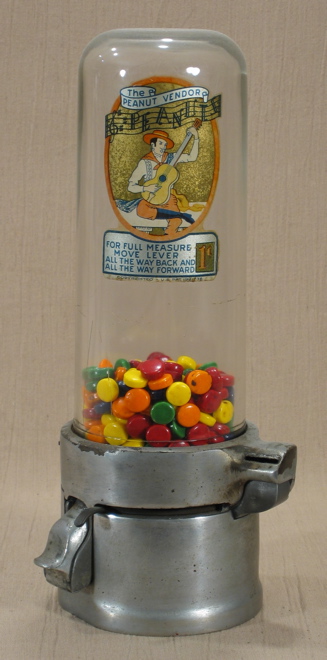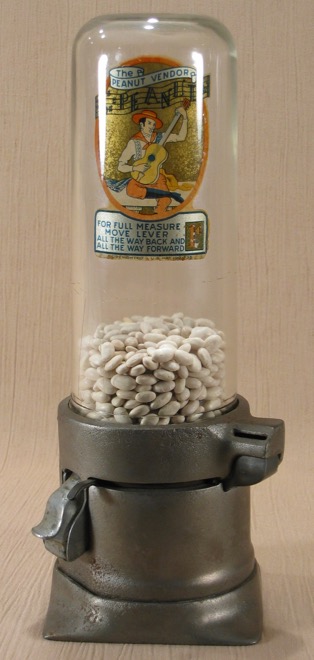___________________________________________________________________________________________
Vendex Peanut


___________________________________________________________________________________________


Vendex Co., Boston, MA, c. 1935, 12 1/2" left, 13 1/2" right. This is one of the tall, small-footprint models that became popular in the 1930's. This and models such as the Grandbois, Tom Thumb, Penny King, and Northwestern 33 Jr. were used on bars and store countertops where they provided the goods (and the profits) while taking up very little counter space.
The machines above are made of cast iron and are chrome- or nickel-plated (the left one) or painted (the right one). I've also seen examples that were painted aluminum or bare aluminum. I'm convinced that the aluminum version was later in this model's life cycle. I can't prove that, but it's the evolutionary path that machines generally travelled and I see no reason this model would differ from that. The bottom of these machines is sometimes stamped "Vendex Co., Boston, Mass.," and sometimes it's blank.
Several variations of this model are depicted in Silent Salesmen Too. The great majority that I've seen have a round base like the one on the left. Some have a square base, of which two types exist:
Most Vendex machines don't have decals, but when found with a decal the most common one is the kind pictured above. It's an elegant decal with a lot of colors and in my opinion is one of the prettiest decals around. In 2010 a friend of mine who lives in Europe bought one of these machines on ebay and had it shipped to me to hold until he could pick it up. It arrived safely and I unpacked it and tucked it away for him. Next time I talked to him he mentioned that the decal on his differed from the decal on mine. Huh? Both decals were of the mandolin player, but the colors differed and the text differed slightly, and I hadn't noticed until he told me.
The examples pictured above are 100% original. The same globe is pictured on both machines.
___________________________________________________________________________________________
___________________________________________________________________________________________
©Small Vintage Vending 2018